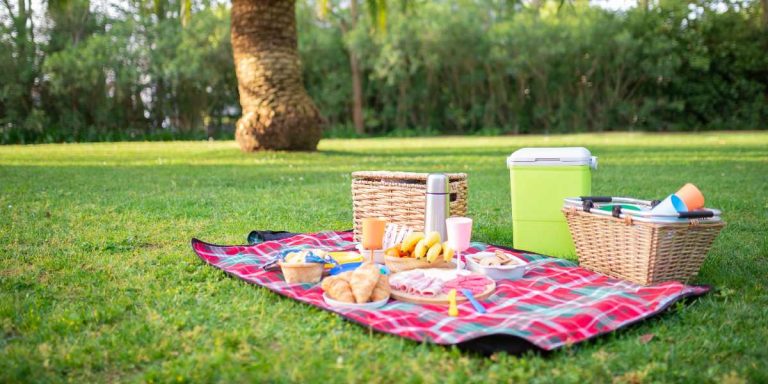Yoga at Home for Beginners | Guide on how to create your own yoga routine
Here’s my complete guide that will help you create your own yoga routine for beginners! You’ll learn about the benefits of practicing at home and what kind of equipment you’ll need to get started. I’ve also included a list of poses that will help strengthen your core muscles which are essential for good posture.
But first, a few words about yoga!
Yoga is an ancient practice with its origins in India. It combines stretching, breathing, and meditation. Yoga is not just a physical exercise but also a way to connect with your mind and body. It can help you become more flexible, improve your breathing techniques, relieve anxiety and stress, and build strength and balance.
Yoga was developed by the ancient sages of India to help them achieve health, harmony, and peace of mind by learning to control the body and quiet the mind through exercise (asanas), breath control (pranayama), and meditation (dhyana).
Yoga can be practiced at any age and it’s especially beneficial for people who suffer from chronic conditions such as arthritis or back pain. If you have never done yoga before or feel intimidated by the idea of visiting an expensive studio full of professional yogis with expensive equipment, then don’t worry: there are plenty of ways to get started practicing yoga at home! And I’ll tell you all about it below!
Before we get started, I want to let you know that I created a 4-Week Yoga Workout Program for beginners, in partnership with professional yoga teachers. It contains videos, schedule and detailed explanations for each yoga pose. With just $29.99 you can get instant and permanent access to your very own yoga workout program.
Table of contents:
- Why you should start doing yoga at home
- How to learn how to do yoga at home
- What types of yoga are best for beginners?
- Equipment you need for doing yoga at home
- Tips on creating your own beginner-friendly yoga at home routine
- How often should you practice yoga at home?
- Best asanas for yoga at home for weight-loss
Why you should start doing yoga at home
A yoga at home workout is a great way to build strength, flexibility, balance, and feel centered. It’s also a great way to relieve stress and relax. If you are looking for ways to improve your health, your mood, or just want more energy in your life then yoga is a perfect way.
Here are some other amazing advantages of doing yoga at home:
- You can do yoga at home in your own time, space, and clothes – no need to invest in fancy equipment!
- Yoga allows you the freedom to create your own practice, so you get to decide what works best for you.
- You can also do yoga when it suits you and on the days that suit you most, without any pressure. That’s why I love doing yoga at home because even if my schedule gets totally crazy in one day, I still know that my mat is always waiting close by
How to learn how to do yoga at home
In case this sounds like something you want to try, then you might be wondering how to do yoga at home. First, there are some things and basic rules that you need to know beforehand. After making your own research (watching Youtube videos is the best idea if you ask me) on yoga and the different yoga poses, here is my list of basic rules to keep in mind:
- The type of yoga class and style you choose should depend on your goals. Some classes focus more on breathing and meditation while others include more movement asanas (postures). So if you’re wondering how to learn to do yoga at home, the very first step is to research yoga styles and types of classes.
- You can purchase yoga mats, blocks, and straps online or at most sporting goods stores. If you don’t have the budget for these items right now, then simply use a towel or blanket to cushion your body when lying down during rest periods between poses.
- Beginners should try very simple asanas (postures) that can be easily learned by following a video tutorial, for example.
- Always warm up your body before starting and stretch at the end. It’s important to do a light warm-up and to take some deep breaths first before starting off with any stretching or other exercises because these activities could cause unwanted injuries when they’re done too quickly without proper preparation beforehand.
In addition to the above, here are some other important things to consider as you get started (and some things that yoga can teach you, too!):
- Listen to your body – this is the most important thing! If something doesn’t feel right, stop doing it. If a pose is uncomfortable, don’t force it—take a break or go into another pose instead.
- Be patient with yourself – it takes time and practice to understand what works best for your body and how much effort is required in each pose. Don’t expect perfection right away—it’ll come with time and effort!
- Be gentle with yourself when learning new poses – everyone has different bodies with different abilities so there isn’t one “right” way of doing things (even though there are many good ways). As long as you are working towards improving over time then that’s all that matters!
What types of yoga are best for beginners?
If you’re just getting started and wondering what yoga is best for beginners, it’s important to choose a type of yoga that aligns well with your goals.
Yoga is an ancient practice that has been incorporated into many different lifestyles and cultures. This popularity has expanded the practice to people of all ages, interests, and ability levels. Yoga can be used to improve flexibility or build strength. It can also help reduce stress levels in the body by releasing endorphins.
There are many different types of yoga available today – hot yoga (hot yoga at home is pretty fun!), power yoga, flow yoga, yoga for weight loss… and the list can go on and on!! But if you’re just starting out on your journey toward better health through this ancient form of exercise then perhaps one of these three types would suit you best:
1. Hatha Yoga – Hatha is a general term for any class that involves holding poses in stillness. Hatha yoga at home is a great way to practice balancing your mind and body, with poses such as mountain pose or tree pose.
2. Vinyasa Yoga – Vinyasa yoga is a dynamic style of yoga that combines breath with continuous movement. It’s also known as “flow yoga,” because it flows from one pose to the next in a fast-paced, rhythmic way. During Vinyasa yoga, you will practice both standing postures and seated ones, so it’s absolutely impossible to get bored!
3. Restorative Yoga – In this type of yoga class, you’ll spend most of your time in soothing poses on the ground. These poses are designed to help you relax, so they’re perfect if you have trouble sleeping or just want some time to unwind.
Equipment you need for doing yoga at home
The most important rule of yoga is: use your body! There’s no need to buy fancy equipment or clothes. In fact, you don’t need anything at all other than yourself, which means that anyone can practice yoga – how awesome is that?!
If you’re just starting with yoga at home, make sure that you have a clean and safe place to practice in. It’s also important that you are comfortable with your environment as well as yourself.
There are some pieces of equipment for yoga at home that can help make your practice more successful:
- a mat – in case you don’t have a yoga mat, you can use a blanket or towel to cover the floor with and cushion your knees during poses that require you to be on your knees (like cat pose) or resting your forehead on the ground (like child pose).
- yoga blocks – to keep your head from touching the floor and for balance poses, especially those involving one leg (e.g., one-legged forward bend).
- straps – for stretching and flexibility exercises
- maybe even some music if it helps you to get in the zone!
Tips on creating your own beginner-friendly yoga at home routine
Before you take your first yoga at home program, there are a few things to consider.
First, do some research on different styles of yoga. You’ll want to choose one that’s right for you. Be sure to look for an online instructor or some yoga at home classes that suit your personality and schedule as well as your budget.
Once you’ve found the perfect fit, it’s time to create a plan and a schedule! It’s important to keep it realistic, so you’ll be able to stick to it without frustration.
If you’re new to yoga, it’s important to also learn when to practice. While there are many ways you can incorporate yoga into your life, there are some things that you should keep in mind when creating a routine. Despite popular belief, not all yoga needs to be done first thing in the morning or before bed. There are many benefits of doing yoga at any time of day – you just need to find what fits you best!
Here are some additional tips for yoga at home for beginners:
- Before you start your yoga practice, you will want to make sure your body is ready. This means warming up, stretching, and doing some breathing exercises. Some good warm-up exercises include jumping jacks, toe touches or cat/cows stretches. You can also do sun salutations which are used in many different styles of yoga practice. These will get the blood flowing through your body and help loosen up tight muscles before moving into more challenging positions or poses.
- Keep your yoga mat clean and dry;
- Focus on your breath – Take time to breathe in and out slowly and deliberately, especially during poses that might make you feel uncomfortable or challenged. This will help ensure that you remain calm and centered throughout your practice session;
- Pay attention to how different parts of your body feel when performing certain poses – and then try modifying them if necessary so they’re more comfortable for you to hold longer periods of time without getting tired easily;
- Use a strap to help you hold poses in place – this will keep your hands from straining during difficult positions, and it can also allow you to stretch out further than normal (because with the strap, there is less risk of falling over);
- Look for some yoga at home videos that are long enough for you to do a wide range of poses – this way you’ll quickly learn what you like!
How often should you practice yoga at home?
People like you who have never practiced yoga before often ask: “How often should I do yoga at home?”
There is no right or wrong answer to this question. There are just general guidelines, which can be applied to you as well, but only if you want to. They won’t necessarily work for every individual, but they will give you a good starting point from which to build your own routine.
Some people recommend practicing five days per week for 20 minutes each session. However, some people prefer shorter sessions (5-10 minutes) while others prefer longer sessions (1 hour). The key is finding what works best for YOU!
In my experience, the best practice schedule is three times per week (Monday, Wednesday and Friday, for example). This helps keep your body in shape without overworking it so that you don’t get injured or tired from doing too much at once.
I recommend practicing for about 30 minutes each time — preferably in the morning before breakfast or after dinner if possible (this way your body will be ready for bed when it’s finished).
However, if this proves difficult due to scheduling conflicts with other activities such as work/school, here’s a genius trick: try splitting your yoga practice into two different sessions throughout the day — for example, 10 minutes during lunchtime and another 10 minutes after work ends, around dinnertime, etc.
And if you want to think more about your best times of the day for some yoga to practice at home, here are some popular suggestions:
- Morning – if this is your preferred time of day for your own yoga at home routine, then go ahead and give it a try. But don’t worry if this isn’t working out because there are plenty more options below too!
- Afternoon – many yoga lovers claim that their energy levels peak after lunch so this might be an ideal time for some yoga and relaxation;
- Evening – Some people even say that evening workouts help them sleep better;
If you’re feeling less than energetic when it’s time to go do your daily yoga practice, then try doing it after eating. This is because food can provide some much-needed energy and motivation. It also helps with digestion so that’s another reason why I think this works well!
Best asanas for yoga at home for weight-loss
In case you want to do some yoga at home to lose weight, here are some excellent postures to try out, also called asanas:
- Backbends
- Standing poses
- Standing forward bends
- Triangle pose
- Downward facing dog
- Plank
- Child’s pose
All in all, yoga is an excellent way to stay healthy and fit. It can help you reduce stress, improve your sleep and mood, as well as build strength and flexibility in your body. And best of all? Yoga doesn’t require any fancy equipment or clothes – you can practice it right at home!
If you’re interested in starting a daily yoga practice but don’t know where to begin, this guide will surely help get you started!
If you make this, please leave a review and rating if you liked this recipe! ★★★★★






